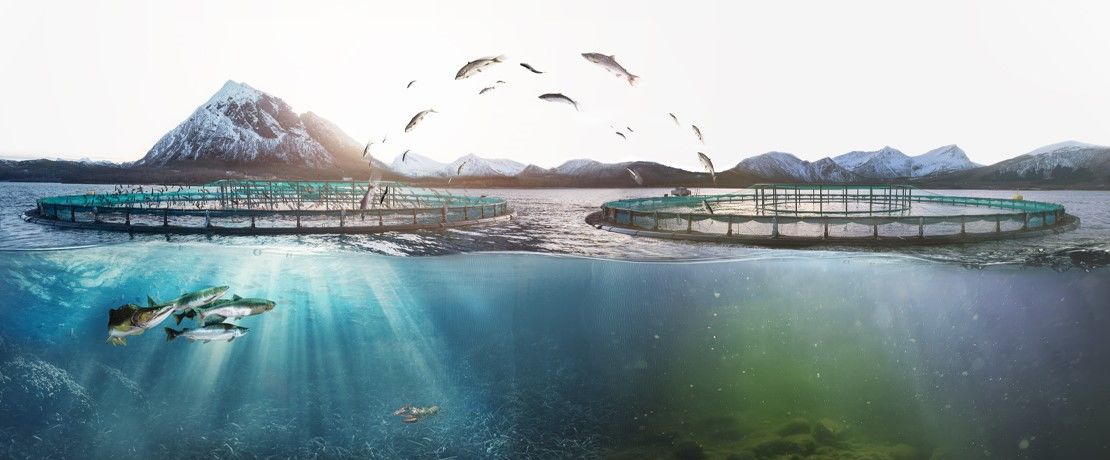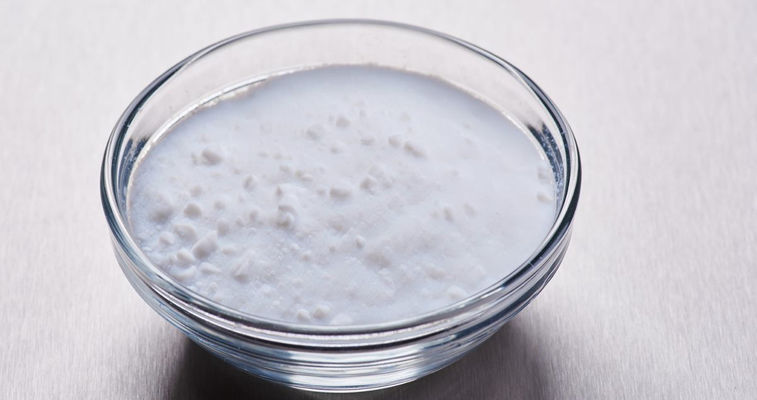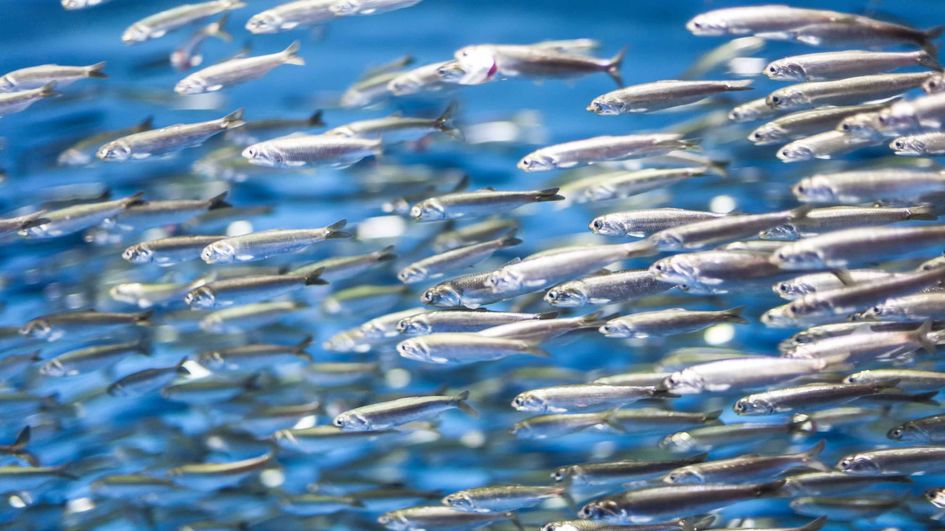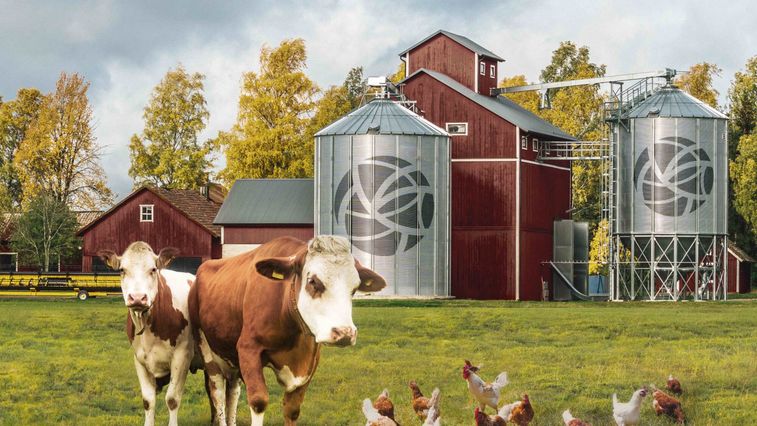
Seven advantages for animal feed producers and fish farmers
Silica for stable fish feed pellets with increased fat content in aquaculture
Edible fish such as trout or salmon need very fatty feed, but until now the conventional production processes have set a technical limit to the fat content of animal feed pellets.
With silica from Evonik, manufacturers can now add a high fat content directly in the first production step during extrusion. Because the subsequent oil coating is no longer needed and the pellets remain stable despite being highly fatty, this method is cheaper for manufacturers and more sustainable for the environment. Fish is an important part of a healthy diet, as edible fish and seafood contain valuable unsaturated fats such as omega-3 fatty acids, protein and minerals. However, the growing global population is driving an increase in demand, in turn threatening natural fish stocks through overfishing of the oceans. As a result, many fish species suitable for human consumption have long since been farmed in aquaculture facilities – not only in enormous tanks in the open sea, but increasingly also in halls on land, far away from their natural environment. “Aquaculture has been the fastest-growing segment of the food industry over the last few decades; more than 122.6 million metric tons of fish […] were already produced in aquaculture in 2020,” reports the Leibniz Institute of Freshwater Ecology and Inland Fisheries.
According to estimates by the Food and Agriculture Organization of the United Nations (FAO), the majority of edible fish will come from aquaculture by the year 2030.
Silica for stable pellets with high fat content
Alongside water quality, the nutritional value and constitution of the feed, as well as the feed management, are all essential for the health and growth of the fish in aquaculture. Dry, pelletized food is the conventional type of feed used, as it can be adapted to the needs of individual fish species, for example in terms of fat content. And silicas from Evonik also play a role here: Animal feed manufacturers can now add fat to fish feed recipes more efficiently and produce stable pellets with high fat contents of up to 37 percent thanks to specially modified silicas.

Silica in the animal feed industry
Silicas from Evonik perform many functions in animal feed manu-facturing. Until now, they were mainly used as an anti-caking agent
for powdery animal feed and as a carrier substance for liquid additives such as vitamins or organic acids in premixes.
But now there are more potential applications: By adding silica directly in the feed formulation, the fat content can be increased significantly during pellet extrusion, thereby enabling the subsequent oil coating step to be dispensed with. This makes it possible to manufacture stable
pellets with a high fat content.
The challenge: to extrude fatty animal feed mixtures
Salmonids, which include popular edible fish such as salmon, trout and char, need an especially high amount of fat and proteins. “Salmons, in contrast to most marine fish, have the capacity to use lipids as a fuel instead of protein. Due to a low feed conversion rate, they efficiently use the fat in the feed. So, for salmon feed for mature fish, it’s common to have up to 23 or 24 percent fats”, explains Frédéric Gaumet, Head of R&D – Business Development at Pure Salmon Kaldnes, based in Sandefjord/Norway is a branch of Pure Salmon Limited a leading player within RAS-technology.
However, producing feed pellets with the required fat contents of 20 to 35 percent is no easy matter. If oil is added in the extrusion process, for example, this softens the feed mass and the mechanical energy input declines due to the lubricating properties of the oil. This results in a significant decrease of mechanical pellet stability leading to a higher amount of fines. Furthermore, the oxidation-sensitive essential fatty acids and other temperature-sensitive components (e.g., vitamins and probiotics) need to be protected from the high temperatures of the extrusion process.
In conventional manufacturing processes, pellets are therefore only coated with oil at a later stage. This is an additional and cost-intensive production step, which aqua feed manufacturers
can do away with by using silica from Evonik. Another positiveeffect is that this makes pellet manufacturing more sustainable.

“With only around one percent of our calcium silicates and silicon dioxides in the raw material formulations, we succeeded in manufacturing stable fish feed pellets with a total fat content of up to 37 percent. The total fat amount can be added as early as the extrusion stage,” comments Carolina Schillinger, Technical Market Manager
Silica at Evonik. “And even at lower fat contents of between 11 and 37 percent, silica significantly increased the mechanical stability of the pellets under the applied extrusion conditions – by up to 60 percent depending on the fat level and silica type.”
One reason for this is the tremendous absorption capacity of silica within its pores and interparticle spaces. As such, silica absorbs the oils like a sponge during extrusion. This enables an increased mechanical energy input and thus a good starch gelatinization even at higher fat contents. In turn, a high degree of starch gelatinization brings about a stable pellet structure and makes the starch easy to digest. “Moreover, we believe that fumed silicas (e.g. AEROSIL® 200 F) in particular interact with the starch polymers during gelatinization due to their network-forming properties. This immediately stabilizes the starch network,” explains Schillinger
Salmonoid feed manufacturers are not the only ones to benefit from this new silica application: In feed pellets for crustaceans, tropical freshwater fish and carnivorous marine fish such as sea bass, too, the ideal fat content can be adjusted quickly and easily by adding silica. In addition, the mechanical stability of the pellets is a relevant factor for all forms of aquaculture.
The development of balanced fish feed formulations for different species and pellet design are extremely complex due to the interplay of biochemical and mechanical factors, as the Leibniz Institute of Freshwater Ecology and Inland Fisheries describes on the website aquakulturinfo.de: “The basic mixture and extrusion determine the properties of the pellets when feeding. The most important factors are properties such as sinking behavior, durability in water, digestibility, size and taste.”
“With only around one percent of our calcium silicates and silicon dioxides in the raw material formulations, we succeeded in manufacturing stable fish feed pellets with a total fat content of up to 37 percent.” Carolina Schillinger, Technical Market Manager Silica at Evonik
The quality of the feed has a direct impact on the water quality. Firstly, pellets need to be stable enough not to disintegrate too early upon contact with the water. Secondly, they should taste good and be easily digestible in order to minimize the amount of feed residue and excrement left in the sea water (or in the closed water circuit in RAS facilities). Fish feed specialist Alltech®Coppens makes the following statement on this: “A RAS feed is characterised by high digestibility, leading to minimal amounts of faecal matter, and high protein retention characterised that minimises ammonia excretions so that the filters can work more efficiently. Next to that, high palatability is required for good feed intake and a composition that allows optimal growth. In trout, for example, this means a high-energy feed with a rather low ratio between digestible protein and digestible energy.”
Silica also allows the physical und the physiologically relevant properties of feed pellets to be optimized. This is relevant for the entire value chain from production to feeding: Solid, stable pellets are easier to store, transport and use. Moreover, adding silica reduces the amount of fat leakage when they are stored at higher temperatures. The pellets are more resistant to abrasion during transport and when passing through the feed system, in turn reducing dust, dirt and the amount of feed lost. The water stability and species-dependent sinking speed of the pellets also play a decisive role in a good feed intake and for water hygiene.
“SEVEN AT ONE BLOW”: ADVANTAGES OF SILICA IN FISH FEED PELLETS FOR PRODUCERS AND FARMERS
- Sustainable and efficient pellet production
- High-quality feed formulations for all species
- Stable pellets with a very high fat content
- Adding fat in the extrusion process saves energy, effort and expenses
- High pellet stability reduces dust and feed loss during storage, transport and feeding
- Less downtime thanks to reduced cleaning effort for the feed system
- Good water stability ensures clean water and fish tanks



